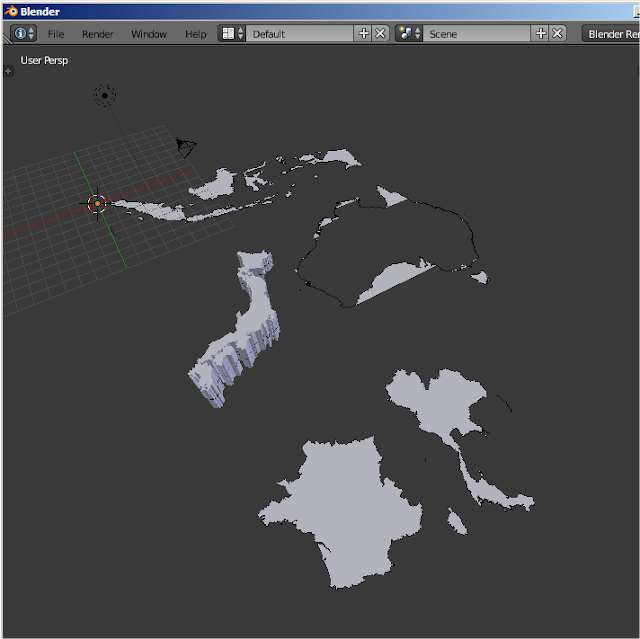My personal interest in Wolfram from the start is because of Wolfram's BIG KNOWLEDGE BASE. And also the way Wolfram could "filter" and "re-present" those data back to users in an interactive and rich kind of way.
I supposed it would be a really good personal case study and research for DATA VISUALIZATION.
If you are interested in Data Science, you should also check thing like R Programming. Or maybe look up some ways Python can process data.
We can tell Wolfram to QUERY data using Wolfram Language SYMBOL, which I believe it will give you ENTITY, and further more the PROPERTIES of ENTITY.
For example:
1) Supposed we want to know more about our PLANET: Earth. Wolfram recognize this "Earth" as a String. What if we want to actually find out more about ENTITY called EARTH?
2) We could use the CTRL+ EQUAL and let Wolfram guess the ENTITY.
3) Which of course will give us back something like this: Entity["Planet", "Earth"]
By knowing the ENTITY, we can then further dig in the data.
Coincidentally, Wolfram Language has special SYMBOL, that deals with Planet Data, conveniently called: PlanetData[]
Please look up Wolfram Language Reference about PlanetData[] command to find out more details.
Quick example below is to query the AGE of EARTH:
You can apparently give it a list of planets:
Oppositely you can give it a list of properties you want to find out about.
And... something like this:
Further more, from documentation, you can see that the PlanetData[] command itself will give you all the list of the Planets. So we can do something like below:
And apparently you can add argument called: "EntityAssociation" and ended up with list like below.
That is a quick look at PlanetData[].
There are others, below are some of my favourite "SomethingData[]":
Table[ EntityValue[Table[Entity["Country", x], {x, {"Brazil", "Cuba"}}], x], {x, {"Name", "Population", "Flag"}} ]
Above is actually a mistake, we should have done it like this:
EntityValue[ Table[Entity["Country", x], {x, {"Brazil", "Cuba"}}] , {"Name", "Population", "Flag"} ]
Making "mistakes" like this is actually a great way to advance you in programming, only if you do not stop or giving up. We need to figure out the mistake and fix it. Read documentation and continue being curious to find out more.
TableForm[]
Grid[]
I supposed it would be a really good personal case study and research for DATA VISUALIZATION.
If you are interested in Data Science, you should also check thing like R Programming. Or maybe look up some ways Python can process data.
SomethingData[]
Now, we know that Wolfram knows A LOT. However to access those knowledge, we need some kind of understanding about the way Wolfram store the data.We can tell Wolfram to QUERY data using Wolfram Language SYMBOL, which I believe it will give you ENTITY, and further more the PROPERTIES of ENTITY.
For example:
1) Supposed we want to know more about our PLANET: Earth. Wolfram recognize this "Earth" as a String. What if we want to actually find out more about ENTITY called EARTH?
2) We could use the CTRL+ EQUAL and let Wolfram guess the ENTITY.
3) Which of course will give us back something like this: Entity["Planet", "Earth"]
By knowing the ENTITY, we can then further dig in the data.
Coincidentally, Wolfram Language has special SYMBOL, that deals with Planet Data, conveniently called: PlanetData[]
Please look up Wolfram Language Reference about PlanetData[] command to find out more details.
Quick example below is to query the AGE of EARTH:
You can apparently give it a list of planets:
Oppositely you can give it a list of properties you want to find out about.
And... something like this:
Further more, from documentation, you can see that the PlanetData[] command itself will give you all the list of the Planets. So we can do something like below:
And apparently you can add argument called: "EntityAssociation" and ended up with list like below.
That is a quick look at PlanetData[].
There are others, below are some of my favourite "SomethingData[]":
- MovieData[]
- CountryData[]
- SpeciesData[]
- PersonData[]
- DictionaryLookup[]
- CulturalData[]
I found something interesting, like with CountryData[], apparently giving it multiple list of PROPERTIES to query returns an error... but I can query PROPERTY for MANY COUNTRIES at the same time such as:
"Shape" (in Maps)
"Flag"
"Capital City"
I found that even at this level of exploration, Wolfram has amazing feature.
I could export out the Shape as SVG format for those countries and bring it into Blender 3D, for example and I could make a more interesting 3D render this way.
 |
| The Shape map of Australia is a bit screwed, maybe the SVG is not clean. Nevertheless, this is still interesting usage. |
 |
| Country Flag Data as SVG, the color even comes with it. |
FUNNY ACCIDENT
Actually during this exploration I found out few things. A long way, but sometimes more robust way, to get to the PROPERTY of ENTITY is by using EntityValue:Table[ EntityValue[Table[Entity["Country", x], {x, {"Brazil", "Cuba"}}], x], {x, {"Name", "Population", "Flag"}} ]
Above is actually a mistake, we should have done it like this:
EntityValue[ Table[Entity["Country", x], {x, {"Brazil", "Cuba"}}] , {"Name", "Population", "Flag"} ]
Making "mistakes" like this is actually a great way to advance you in programming, only if you do not stop or giving up. We need to figure out the mistake and fix it. Read documentation and continue being curious to find out more.
TableForm[]
Grid[]













Comments
Post a Comment